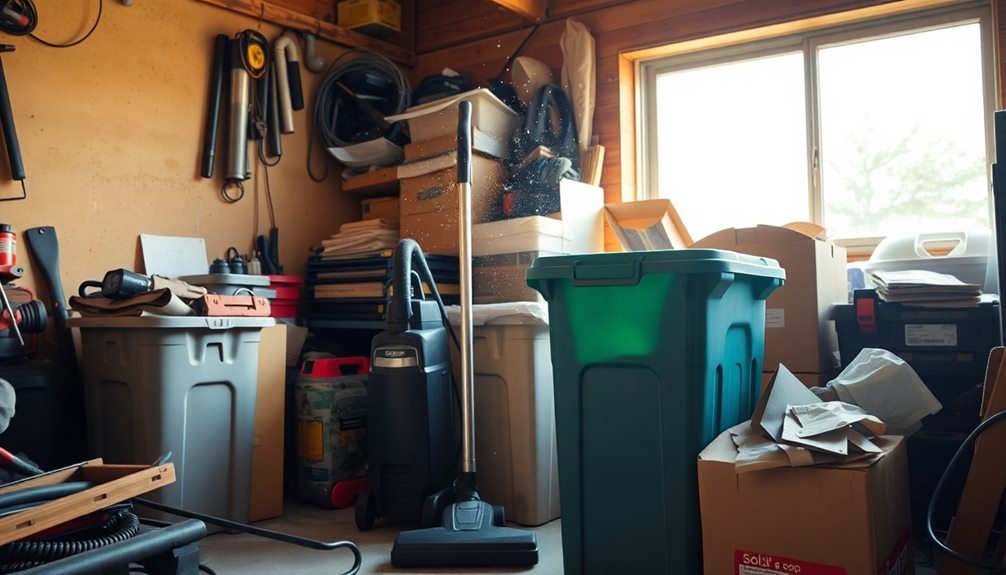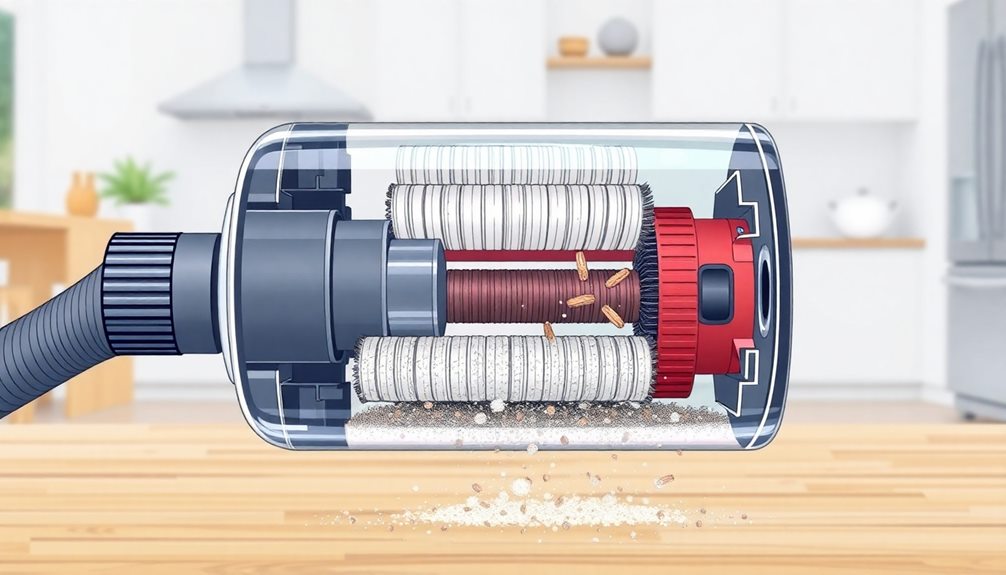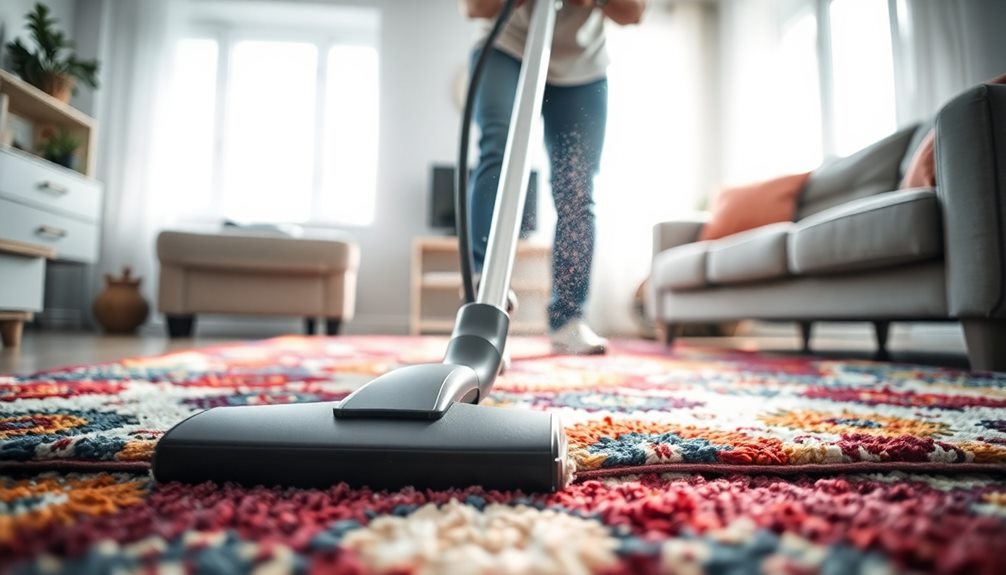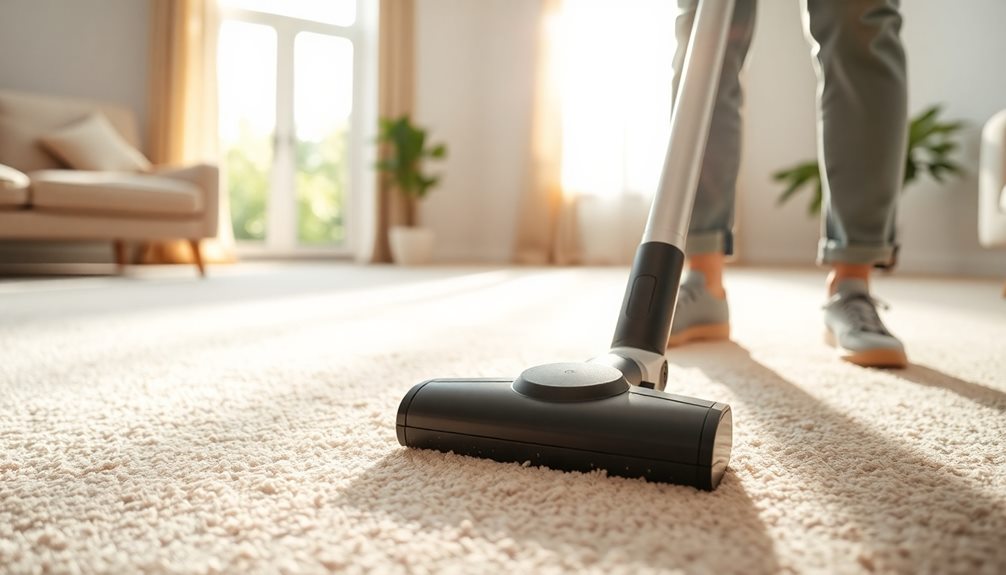You can responsibly dispose of your old vacuum cleaner by recycling, donating it, or repurposing parts. Check local recycling centers that accept vacuum cleaners as e-waste, as around 90% of its components can be recycled. If your vacuum's still working, consider donating it to a charity or a thrift store. You could even sell it online through platforms like Craigslist. For a creative twist, repurpose some parts, like using the body as a planter. Once you know your options, making the right choice becomes easier and could inspire some innovative ideas!
Key Takeaways
- Check local recycling programs or e-waste centers that accept vacuum cleaners to ensure responsible disposal.
- Consider donating operational vacuums to charities or thrift stores to help those in need.
- Disassemble the vacuum, sorting components into recyclable metals, plastics, and electronics for efficient recycling.
- Participate in manufacturer take-back programs or e-waste events for proper disposal of old vacuums.
- Explore creative upcycling ideas, transforming parts into new items like planters or pet toys to reduce waste.
Recycling Options for Vacuum Cleaners
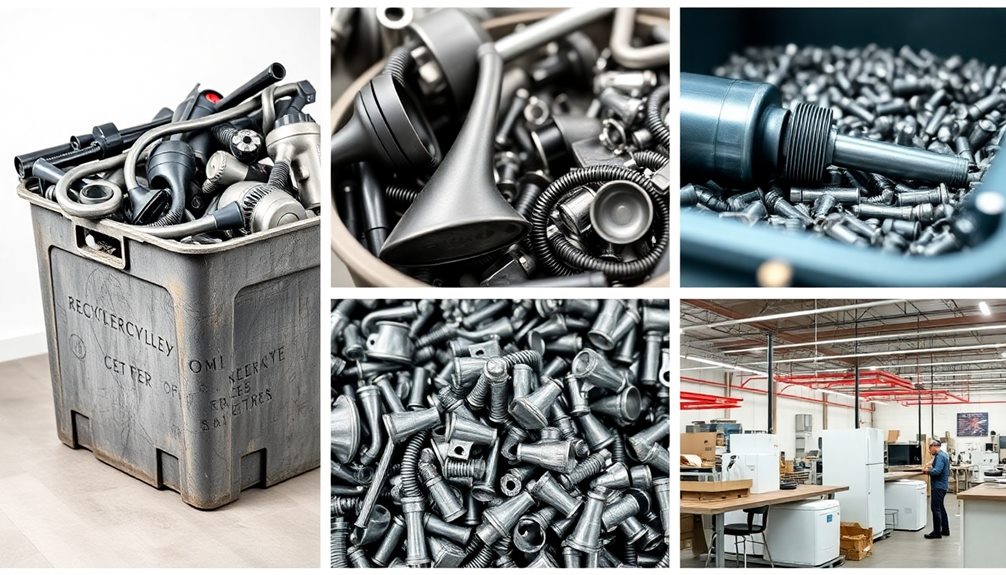
When you're ready to dispose of your old vacuum cleaner, consider exploring recycling options to minimize environmental impact. You can recycle vacuum cleaners at many local recycling centers, which accept them as part of their e-waste collection programs. This process allows for the recovery of valuable materials, like metals and plastics, greatly reducing landfill waste.
Did you know that approximately 90% of a vacuum cleaner's components can be recycled? This includes metal parts and thermoplastics, making it a great choice for eco-conscious disposal. Some manufacturers even offer trade-in programs, giving you an upgrade incentive while promoting responsible recycling.
If you prefer, you can also take your disassembled vacuum cleaner to a scrap yard. This option lets you recycle metal and plastic components, contributing to material recovery and possibly earning you a small financial return.
Just make sure you prepare your vacuum properly: disconnect power sources, remove accessories, and clean all components to eliminate hazardous materials, such as batteries.
Donation and Resale Opportunities
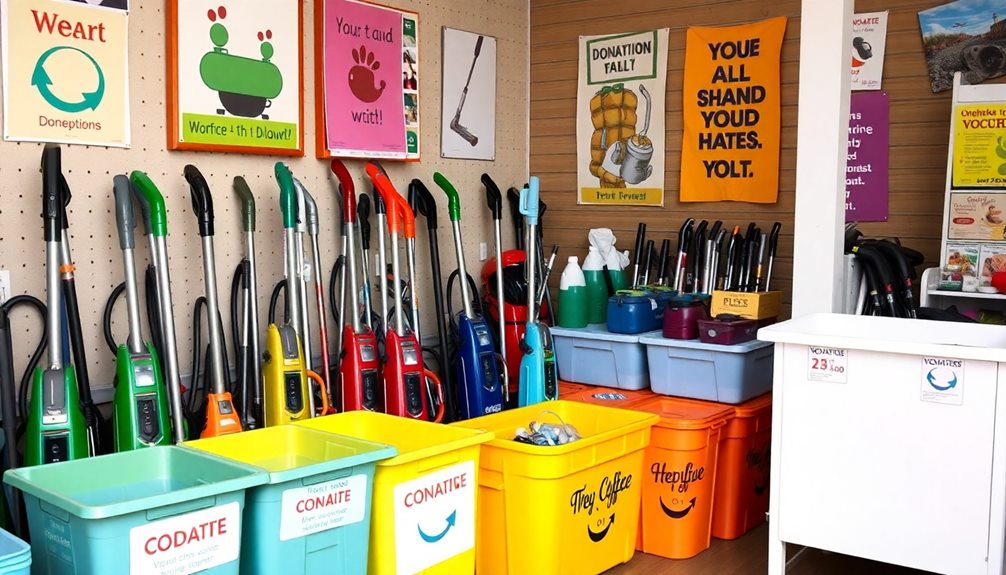
Recycling isn't your only option for getting rid of an old vacuum cleaner; donating or reselling it can also be a great way to extend its life. Many local donation centers, like Goodwill and Habitat for Humanity, gladly accept working vacuums, ensuring they help those in need while promoting sustainability. If you're looking to make a little cash, selling your vacuum online through platforms like Craigslist or eBay allows you to reach a wider audience interested in second-hand appliances.
Here's a quick overview of your options:
| Option | Description | Benefits |
|---|---|---|
| Donation Centers | Charities and shelters accepting operational vacuums | Helps those in need, reduces waste |
| Thrift Stores | Local stores where you can drop off your vacuum | Supports local economy, promotes reuse |
| Online Marketplaces | Platforms like Craigslist and eBay for selling | Wider audience, potential cash |
| Community Groups | Local social media or bulletin boards | Easy sharing, fosters community |
Scrap and Parts Recycling

When you're ready to recycle your old vacuum cleaner, consider exploring scrap yard options that accept various materials.
Disassembling the vacuum makes it easier to identify reusable parts like motors and hoses, while also allowing you to separate non-recyclable components.
Scrap Yard Options
Old vacuum cleaners can be surprisingly valuable at scrap yards, where you can recycle their metal and plastic components. Many vacuum cleaners contain recyclable metals like aluminum and steel, making them appealing to scrap yards that can repurpose these materials into new products.
Before heading to the scrap yard, it's a good idea to check their guidelines for accepted items and any preparation requirements. Some scrap yards might even offer you a small financial return for the metal parts of your old vacuum cleaner, contributing to the circular economy.
| Metal Type | Value per Pound | Recycling Process |
|---|---|---|
| Aluminum | $0.80 | Melt and reshape |
| Steel | $0.30 | Shred and reform |
| Plastic | $0.10 | Grind and recycle |
This table illustrates the potential value of different materials you might find in your vacuum cleaner. By choosing to recycle your vacuum cleaner, you not only help reduce landfill waste but also promote material recovery and reuse. So, gather your old vacuums and consider visiting your local scrap yard!
Disassembly Tips
After considering scrap yard options, you might want to tackle the disassembly of your old vacuum cleaner for more efficient recycling. Start by unplugging the appliance and removing any external components like bags, filters, and attachments. This step makes it easier to recycle individual parts.
Grab some tools, such as screwdrivers and pliers, to carefully disassemble the vacuum's outer casing, motor, and other internal components. While you work, identify the materials you're handling; most vacuums contain recyclable metals like aluminum and steel, along with plastics like polypropylene and various electronic components, including motors and circuit boards.
As you disassemble, sort the parts into categories: recyclable metals, plastics, and electronic components. Make sure to dispose of non-recyclable parts responsibly to prevent contamination.
It's also a good idea to document the process and label any reusable components. This way, you can save them for future DIY projects or resale, maximizing your potential for repurposing and minimizing landfill waste.
Reusable Parts Identification
Identifying reusable parts in your old vacuum cleaner can greatly enhance your recycling efforts and even save some cash. By breaking down the vacuum, you can find components that might be valuable or can be repurposed.
Here's what to look for:
- Motors and Metal Components: Look for motors with copper windings. These can often be recycled for cash at scrap yards.
- Plastic Parts: Many vacuum cleaners have thermoplastic components that are about 90% recyclable. Sort these and send them to a specialized recycling facility.
- Brush Rolls and Attachments: Don't overlook these! Clean and sell them individually, boosting your potential financial return.
Proper disposal of these reusable parts is essential. When you separate and classify them correctly, you not only maximize your recycling opportunities but also reduce landfill waste.
By ensuring that recyclable materials are processed correctly, you contribute to a more sustainable future.
Preparation Steps for Recycling

Before you start recycling your old vacuum cleaner, make sure it's unplugged to avoid any accidents.
Next, remove all attachments and accessories to streamline the recycling process.
Don't forget to empty the dust canister completely for a cleaner, more efficient recycling experience.
Disconnect Power Source
To safely recycle your old vacuum cleaner, start by disconnecting it from the power source. This step is vital for preventing any electrical hazards while you handle the appliance. Unplug it from the electrical outlet before moving forward.
Once you've done that, follow these steps to prepare your vacuum for recycling:
- Empty the Dust Canister or Bag: Make sure to completely remove any debris. This not only makes recycling easier but also prevents contamination of recyclable materials.
- Check for Hazardous Waste: Look for any batteries or other hazardous materials that may require special handling. It's important to identify these before you proceed with recycling.
- Clean the Filters: Thoroughly clean any filters to guarantee they can be recycled. Some recycling programs have specific guidelines for preparing filters, so be sure to check those.
Remove Attachments and Accessories
Removing attachments and accessories from your vacuum cleaner is an essential step in the recycling process. Start by confirming that all parts, such as hoses, filters, and bags, are completely detached. This not only helps facilitate recycling but also makes it easier to assess which components can be reused or recycled.
Next, focus on any reusable parts like brushes and nozzles. These items may be recycled separately or even resold, increasing the overall recyclability of your vacuum.
Don't forget to check and clean the filters as well; some recycling centers require filters to be washed before they'll accept them.
Before you finalize the recycling, make sure to empty the dust canister or bag entirely. This prevents contamination and enhances the suitability of the vacuum for recycling.
Finally, consult your local recycling guidelines for specific instructions on how to prepare your vacuum cleaner and its components for disposal, as these requirements can vary by location.
Clean Dust Canister
After detaching all the attachments and accessories, the next step involves cleaning the dust canister of your vacuum cleaner. This is vital for guaranteeing you can properly dispose of a vacuum while promoting effective recycling.
Follow these steps to achieve a clean dust canister:
- Empty the Canister: Make sure the dust canister is completely empty to prevent contamination of recyclable materials.
- Wash Thoroughly: Use soap and water to clean the canister, removing any remaining debris or allergens. This step promotes safe handling during the recycling process.
- Check Local Guidelines: Before recycling, verify your area's specific requirements for cleaning dust canisters, as they may vary.
Additionally, if the canister is made of plastic, check if it's recyclable in your location. Not all recycling facilities accept the same types of plastics, so confirming this is important.
Creative Upcycling Ideas

Old vacuum cleaners can become the foundation for some truly creative upcycling projects. You can easily transform the body of an old vacuum into a unique planter by cutting out the bottom, adding soil, and planting your favorite flowers. This gives the vacuum a new life as a decorative garden piece.
If you're into creative arts and crafts, consider repurposing the vacuum hoses. They can be used to make flexible sculptures or even as tubing for DIY water features.
The wheels from the vacuum can also be upcycled; attach them to furniture or toys to create mobility aids that are both fun and functional.
Don't forget about the vacuum filters! You can turn them into pet toys by stuffing them with treats and sealing them securely, offering an engaging enrichment tool for your furry friends.
Finally, the outer casing of the vacuum can be painted or decorated to function as stylish storage units or organizers, seamlessly fitting into your home decor.
These projects not only help you repurpose the vacuum but also reduce waste while releasing your creativity!
Environmental Considerations and Regulations
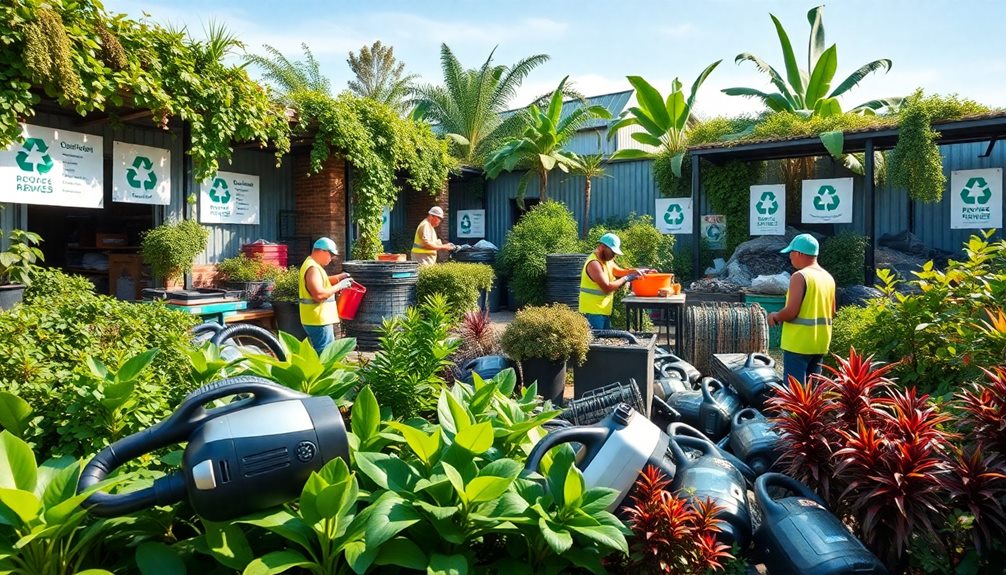
Improper disposal of vacuum cleaners can have significant environmental consequences, contributing to the staggering 292 million tons of municipal solid waste generated in the U.S. each year.
When you toss your old vacuum in the trash, you risk adding to the environmental damage caused by e-waste. Toxic materials in these appliances can leach into the soil and groundwater, posing serious health risks.
To properly dispose of a vacuum, consider these steps:
- Check Local Regulations: Familiarize yourself with your area's waste management guidelines, particularly those pertaining to hazardous waste under the Resource Conservation and Recovery Act (RCRA).
- Use E-Waste Collection Events: Many communities hold e-waste recycling events. These are safe and effective ways to dispose of your old vacuum without harming the environment.
- Explore Donation Options: If your vacuum still works, consider donating it to local charities or thrift stores, extending its life and keeping it out of landfills.
Frequently Asked Questions
How Do I Get Rid of My Vacuum Cleaner?
You can get rid of your vacuum cleaner by recycling it, donating it to a charity, selling it online, or checking if the manufacturer has a trade-in program for proper disposal and potential discounts.
How to Dispose of an Old Dyson Vacuum?
When your Dyson's seen better days, don't toss it like yesterday's trash. You can trade it in, recycle it at local centers, or donate it—breathing new life into someone else's home.
Is It Worth Scrapping a Vacuum Cleaner?
Yes, it's definitely worth scrapping a vacuum cleaner. You can recover valuable materials, earn some cash from metal parts, and contribute to sustainability efforts, all while preventing waste and promoting recycling in your community.
Can I Throw Away a Vacuum Cleaner in NYC?
Did you know NYC generates over 100,000 tons of e-waste annually? You can't throw away a vacuum cleaner in the regular trash; instead, use designated e-waste drop-off locations or recycling programs for safe disposal.
Conclusion
As you bid farewell to your old vacuum cleaner, think of it as a leaf drifting down in autumn, making way for new growth. Whether you recycle, donate, or get creative with upcycling, you're not just clearing space; you're giving your vacuum a second chance at life. By choosing the right disposal method, you're nurturing the environment, ensuring it flourishes just like the fresh blooms of spring. Embrace this change, and watch your efforts bloom into something beautiful.
